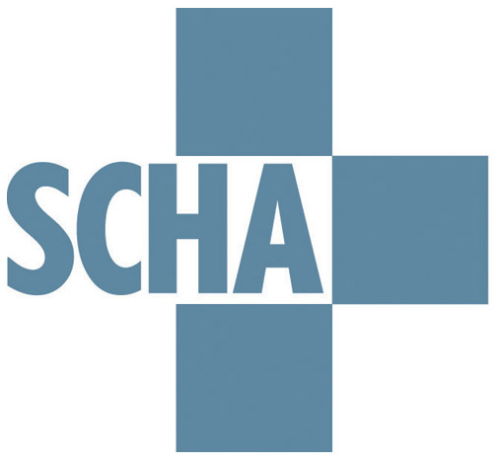Overview
KCG worked with a regional, Academic Health System to define and standardize productivity expectations for its diffuse Advanced Practice Provider [APP] workforce, enabling better, more informed decision-making at the enterprise-level.
The Challenge
KCG’s client is a newly integrated healthcare system employing over 5,000 clinical providers in the South Carolina lowcounty region. As the organization moved from a “federation of departments” to an integrated construct, the Health System inherited a disjointed APP workforce that had been hired and managed in departmental silos for decades.
Without alignment or transparency across historic department operations, Health System leadership struggled to make meaningful assumptions about its clinical workforce, impeding its ability to appropriately forecast revenues, budget operational resources to support anticipated clinical volumes, or make informed hiring decisions across the enterprise. To mitigate this, the System sought to establish clinical productivity ‘targets’ at the individual provider level, which would not only help to inform volume assumptions and further integrated financial planning efforts, but also provide a necessary data point for quantifying the ROI of its APP workforce.
Although at a high level, the Health System recognized the value of its APPs in driving clinical quality, productivity and revenues, leadership struggled to set individual productivity targets due to a number of factors:
Clinical Productivity Benchmarking
The Health System relied on industry benchmarks to assess the clinical productivity of its physicians, as measured by Work-Relative Value Units [wRVUs]. While this was consistent with common industry practice, it could not be applied to the Health System’s APPs [which accounted for over 20% of the its clinical providers], as the only benchmarks available reflected the private practice environment. These benchmarks could not be translated to the academic healthcare setting because:
- Private and non-academic healthcare institutions produce a higher volume of wRVUs overall, due to fewer competing priorities related to research and education.
- The primary function of an APP in the private practice setting is not consistent with that in academic healthcare, as first assist and other clinical roles may be fulfilled by resident or fellow physicians in the academic setting.
As such, attributing private practice benchmarks to the System’s APPs would result in unattainable performance expectations for clinicians and over-allocation of resources for clinic and operational support necessary to deliver on forecasted volumes.
Inconsistent Operations & Data Quality
Without the ability to leverage meaningful industry data, the Health System sought to establish internal APP benchmarks. However, historic, inconsistent operational and billing practices across departments presented challenges to this, as well.
The role of the APP was not always leveraged consistently across clinical settings or business units; before integrating into a Health System construct, individual clinical departments deployed APPs to their own specifications. As a result, while some APPs were empowered to practice at the top of licensure – functioning as independent providers with their own clinic support, and realizing a greater ROI for the Health System – others acted in administrative or medical scribe roles, producing fewer wRVUs or none at all.
Further, it was not possible for the Health System to understand which APPs were deployed inappropriately based on wRVU data alone. The system for capturing and reporting wRVU data was contained in the AMC’s billing software, which attributed any wRVUs generated from a patient encounter to the attending provider on the case. But, while some APPs conducted patient encounters under their own NPIs, others did so under the supervision of the physician(s) they supported . Thus, when an APP conducted work under a physician, the wRVUs they generated were reflected in that physician’s reported productivity, rather than their own. As such, leadership was unable to draw meaningful conclusions from its APPs’ wRVUs, as reported productivity often only reflected a portion of total work performed.
Approach – Integrated Healthcare
KCG worked with the Health System to identify a solution for assessing APP ROI and setting appropriate clinical productivity expectations, so as to create greater transparency and reduce inaccuracies in enterprise budgeting, forecasting, and operational planning activities. While it was not feasible to establish a work-around in the billing software to more appropriate allocate APP wRVUs before the Health systems first integrated budget cycle, KCG focused instead on developing an effective solution for setting productivity targets.
Recognizing that the work of a well-utilized APP allowed the physician(s) they supported to be more productive [regardless of individual wRVUs reported], KCG worked with clinical stakeholders to define joint productivity targets for physician + APP teams. To accomplish this, KCG conducted a comprehensive assessment of departmental APPs across several core areas of performance, including cost, revenue cycle performance, affiliated physician performance, and functional role [e.g. primary care/sole provider, surgical, inpatient, etc.] Leveraging the findings of this analysis, KCG worked with subject matter experts to conceptualize the ‘uplift’ in productivity that a well-utilized APP could bring to a physician in each distinct clinical specialty or environment of care. Finally, these uplifts were then used to simulate productivity team-based ‘targets’ and incorporated into departmental revenue budgets.
Impact
As team-based wRVU targets were integrated into Health System forecasting and planning activities, KCG found that by redistributing productivity assumptions across APP + physician teams, the Health System could expect over $1.2M in additional revenues, without expending additional resources.
Further, KCG found that existing productivity expectations of clinical Departments were underestimated by nearly 17,000 wRVUs. This had resulted in insufficient operational support from the Health System, which hindered the ability of its APPs to practice at the top of licensure. As a result of KCG’s work, the Health System was able to address factors that constrained the utilization of its APPs – including insufficient clinical space, technical and support staff, scheduling templates, and clinic processes – to optimize productivity and value of its APP workforce.








